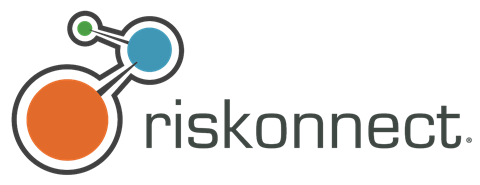How bringing together siloed data points from internal and external stakeholders can optimise risk management and drive accurate decision-making, strategically, operationally, and situationally, writes Jim Wetekamp, chief executive at Riskonnect
Globalisation, technological advances, and sophisticated consumer demands are changing every aspect of the business landscape at an exponential speed, evoking an unprecedented level of business innovation and disruption in equal measure. Think automation of production lines, artificial intelligence used in machinery, virtual reality in training, business model shifts from tangible to intangible assets, and new economies in the on-demand and sharing markets.
Indeed, the demands on risk management is changing as a result, with a greater onus placed on true enterprise risk management, where the discipline extends from within the finance or treasury department, to the front line of businesses. And beyond the enterprise – to third parties, supply chains and, in some instances, to consumers who purchase goods through digital platforms, mobile apps and the like.
At the same time, the risk community is working to significant time pressures to resolve risks quickly. And for public-facing, consumer-oriented and core infrastructure businesses, there are 24/7 mission-critical pressures to mitigating and managing risks, from claims right through to dealing with more strategic risks – reputational damage, for instance.
BRIDGING THE DATA GAP
This new and fast-evolving environment calls for a sophisticated risk management approach, optimised by big data and predictive analytics. Data must be embedded and consolidated within ERM frameworks and capture the full spectrum of risks, including the risk information of third parties and vendors: their cybersecurity footprint, disaster recovery plans, and certifications of insurance coverages.
This information must be combined with the enterprises’ own risk management, insurance and claims data, and linked to assurance activities, internal audit and corporate objectives. All of which should be triangulated onto a heat map or dashboard to help correlate the impacts and visualise the company’s strategic risks.
The advantages are three-fold, penetrating all levels of the business – strategically, operationally and situationally.
THREE-TIERED ADVANTAGE
At a strategic level, the benefit will be felt in cognitive capabilities and in techniques such as risk modelling and simulation. This will help businesses understand the impact of their strategic decisions and identify the most optimal intersection of risk relative to a company’s risk appetite. Take merger and acquisitions, as an example. By overlaying the indicators of value – maybe these are in the manufacturing capabilities, time-efficient deliveries, logistics benefits, increased IP – to the likely risks will provide more accurate projections of the risk profile relative to the value of the merger or acquisition. And then, more informed decisions can be made around mitigation plans.
On the operational level, a data and predictive analytics system will help automate the workflows related to high-volume, low-cost areas. Take claims as an example. Predictive analytics will determine the earliest point of a potential claim, its likely severity and whether similar claims are likely. Does this need immediate attention, or can I automate the follow-up?
On the situational level, data will help in the prioritisation of current workloads, focusing resources to pressing areas. Linked to the operational level, predictive analytics will help evaluate an incident, and determine what proportion of the incident requires operation support or otherwise.
But there are challenges. Because of the variety, volume and velocity of numerous points of siloed data points; businesses struggle with data intake along with its quality and consistency. These challenges cascade down to risk managers, who in turn, find it difficult to extrapolate meaning, the type of meaning that would aid decision-making strategically, operationally and situationally.
Here is where Riskonnect can support businesses. We have helped numerous clients to connect silos, bringing together data points on employees, customers, assets (machinery, buildings), right through to insurance policies and procedures, workflows, audit reports and root-cause analysis in such a way that if an incident occurs, the risk can be correlated to elicit meaningful analytics.
Our goal is to help bridge the data gaps and deliver a unified view across the enterprise and beyond.
This article was sponsored by





















1 Readers' comment